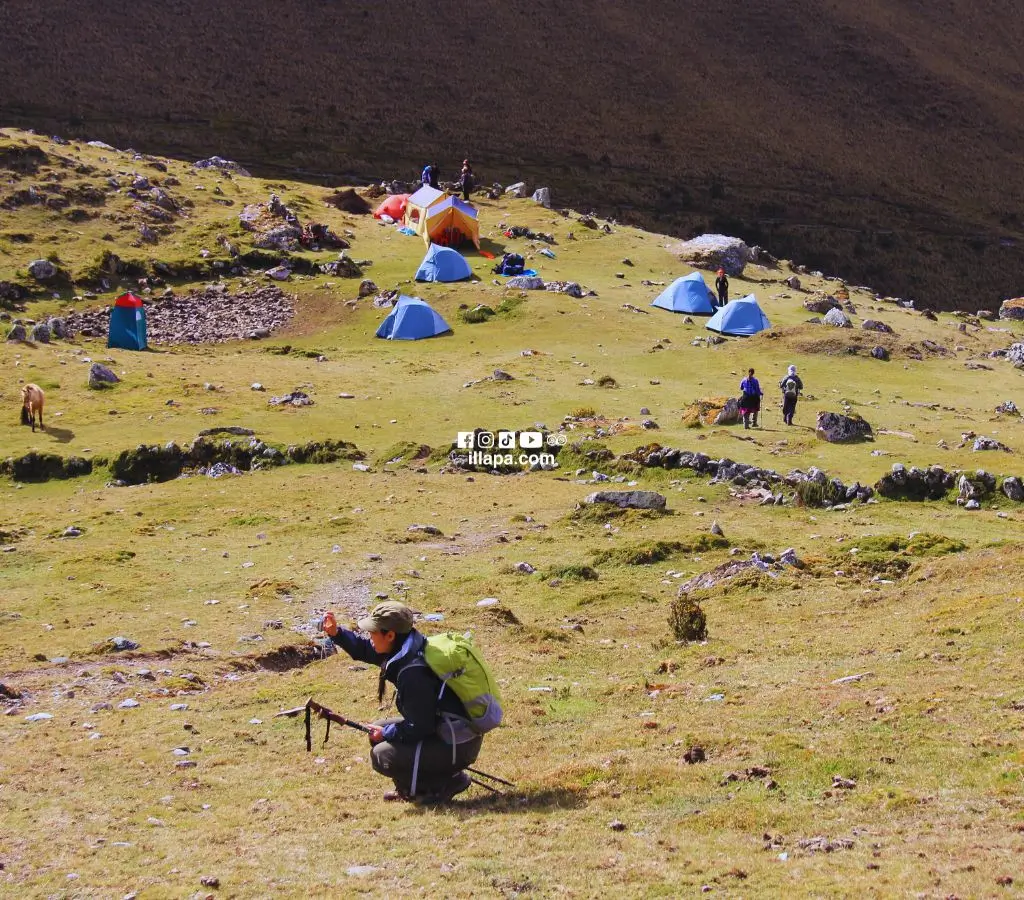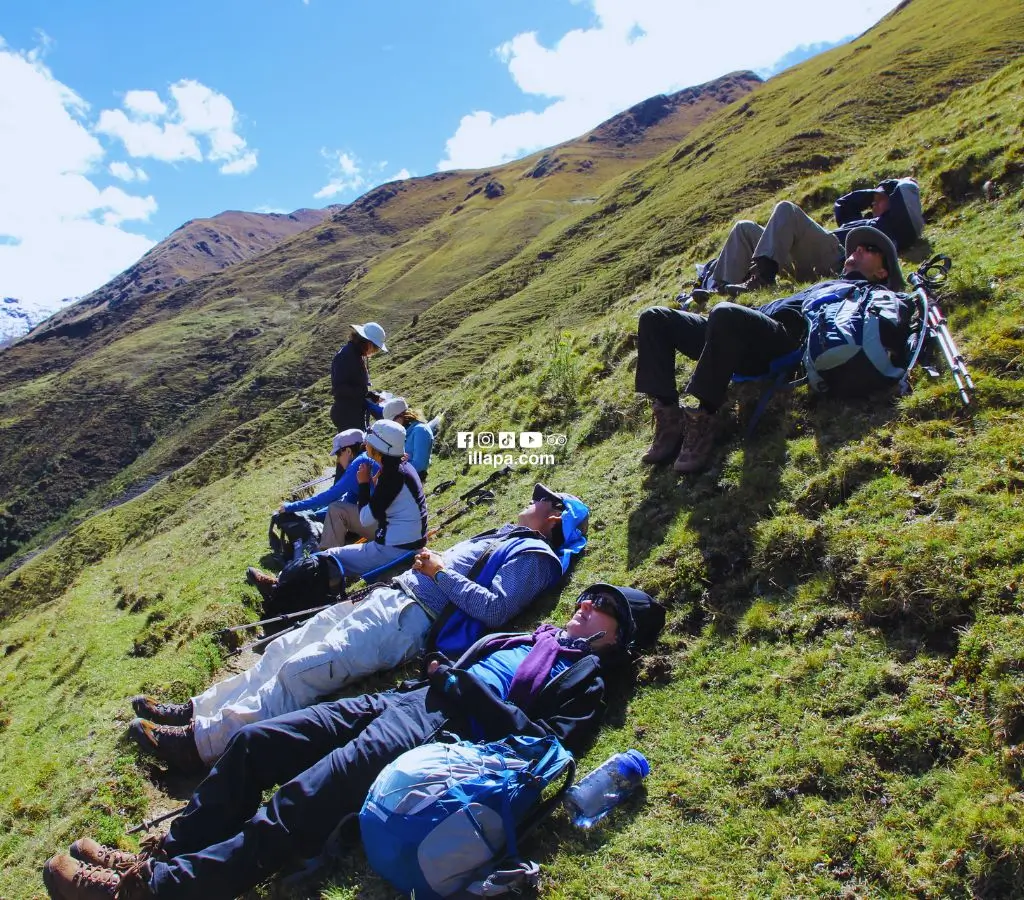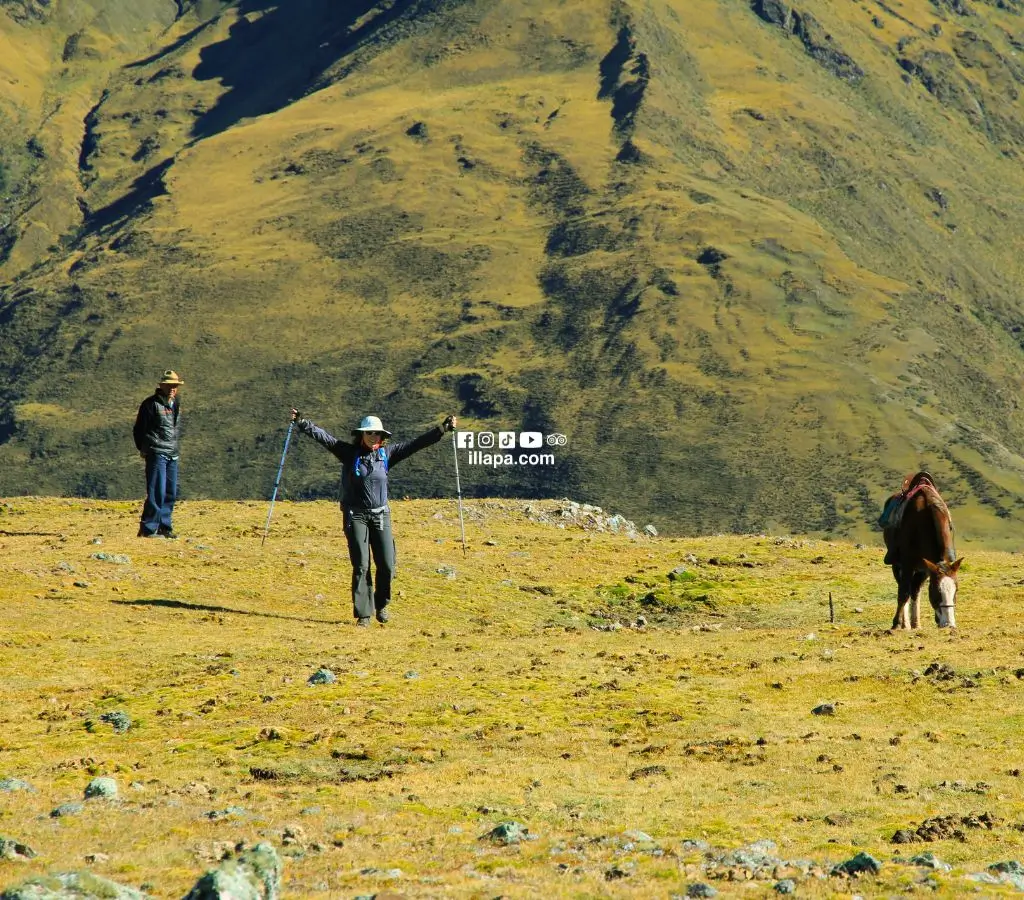The Inca Trail is one of the most iconic and spectacular hiking routes in the world, culminating in the majestic citadel of Machu Picchu. This ancient network of paths covers more than 60,000 kilometers through stunning Andean landscapes, connecting significant archaeological sites, Inca settlements, and natural landscapes of great beauty.
The Inca Trails, also known as Qhapac Ñan in Quechua, were a strategically constructed network of paths that connected the major cities of the vast Tahuantinsuyo, the Inca Empire. This network of trails not only facilitated communication and transport within the empire but also had profound cultural and strategic significance for the Incas.
The extent of these paths was impressive, spanning much of what today are the countries of Peru, Bolivia, Ecuador, Colombia, Chile, and Argentina. However, the most famous and emblematic section of this network is the Inca Trail that leads to the iconic citadel of Machu Picchu.
As a result, it has become one of the world's most famous and popular trails. This trail winds through the Urubamba river basin, ascending steep mountains and offering breathtaking views of nature and Inca architecture.
Besides its logistical and strategic importance, the Inca paths also played a crucial role in the cultural diffusion and integration of the conquered peoples into the Inca Empire. They facilitated cultural exchange, trade, and the mobility of troops, thus contributing to the growth and cohesion of the empire.
The construction of the Inca Trail was a monumental achievement of Inca civil engineering. Using primarily human labor, the Incas managed to build a system of paths that perfectly adapted to the mountainous topography of the Andes, with stone steps, terraces, and retaining walls that still endure today.
For the Incas, the Inca Trail was not just a physical infrastructure, but also a spiritual path that connected the earthly world with the spiritual realm. Along this path, there are numerous sacred sites and places of worship where the Incas paid homage to their gods and performed important religious ceremonies.
In 1983, the Inca Trail was declared a World Heritage Site by UNESCO, recognizing its cultural, historical, and architectural importance. This designation highlights the need to preserve and protect these ancient paths as part of humanity's legacy.
Thus, the Inca Trail is much more than a network of ancient paths; it is a tangible testimony to human ingenuity, cultural richness, and the deep connection between people and nature in the ancient Inca world.
The Inca Trail is located in the Cusco region, in the heart of the Peruvian Andes. The traditional starting point is kilometer 82 of the Cusco-Machu Picchu railway, and the journey ends at the Sun Gate, from where there is an impressive view of Machu Picchu.
There are several options for trekking the Inca Trail, from multi-day hikes to shorter excursions. The most popular options include the classic 4-day and 3-night hike, as well as the shorter 2-day and 1-night hike.
During the hike, hikers pass through various camps and stations where they can rest, enjoy meals prepared by the agencies' cooks, and enjoy the natural beauty surrounding the path. Some of the most notable camps include Wayllabamba, Pacaymayo, and Wiñay Wayna.
The Inca Trail offers a variety of routes and secondary trails that hikers can explore. These trails vary in difficulty and duration, but all offer breathtaking views and an unforgettable experience.
Among all these routes, there are four main ones that converge at Machu Picchu. Here is a description of these four routes:
2. Inca Trail - Salkantay:
3. Long Inca Trail:
4. Two-Day Inca Trail:
Each of these routes offers a unique and exciting experience for travelers, with stunning landscapes and the opportunity to explore the rich history and culture of the Inca civilization along the way. However, it is important to emphasize that all routes require adequate physical preparation and acclimatization to altitude due to the variable terrain and elevation conditions.

The difficulty and duration of the hike along the Inca Trail largely depend on the chosen route and the hiker's fitness level. In general, it is considered a moderately difficult hike, with steep sections and high altitudes that can challenge even the most experienced hikers.
The longer routes tend to be more challenging, as they involve more days of hiking and greater altitude variations. Among them are the 5-day and 4-night Inca Trail, followed by the 4-day and 3-night Inca Trail.
However, the shorter routes can also present challenges, especially for those not accustomed to walking in mountainous terrain, but in their majority, they reach the Sun Gate, as we said, it is a challenge, among them is the 2-day and 1-night Inca Trail.
The Inca Trail, leading to the citadel of Machu Picchu, is generally completed in 4 days and 3 nights. This is the average time to walk trails that make up the classic route of the Inca Trail. However, shorter and longer options are available, depending on the needs and preferences of hikers.
The climate along the Inca Trail can vary considerably depending on the season and altitude. The best time to hike is during the dry season, from May to September, when weather conditions are more stable, and there is less chance of rain.
Rainy Season:
Dry Season:
It is important to be prepared for a variety of weather conditions during the hike, including heavy rains, winds, and cold temperatures at night. It is recommended to bring appropriate clothing and equipment, including rain gear, thermal layers, and warm sleeping bags, preferably during the rainy season.
Now, in the dry season, you should use sunscreen, hats, light clothing, and warm clothes at night because as we gain altitude, the cold at night feels a bit more.
Among the main attractions of the Inca Trail are the stunning Andean landscapes, the ancient Inca archaeological sites, like Llactapata and Runkurakay among others, and the unique experience of walking along a historic path that has been used for centuries.

The Inca Trail to Machu Picchu is one of the world's most famous and exciting hiking routes. This ancient path winds through the stunning landscapes of the Peruvian Andes, leading adventurers on a fascinating journey through history and nature.
Arriving at Machu Picchu through the Inca Trail is an unforgettable experience that combines adventure, history, and natural beauty. Over four days, you walk along ancient paths, surrounded by lush vegetation and spectacular mountainous landscapes.
It all remains a dream; the route is surrounded by Inca ruins, such as the impressive archaeological complex of Wiñay Wayna, which provides a window into the greatness and engineering of this ancient civilization. Crossing the Sun Gate is an exciting moment, as it marks the approach to the legendary lost city of the Incas.
Arriving at Machu Picchu is a magical and exhilarating moment. Upon arriving at the citadel, we are greeted by the breathtaking views of the surrounding mountains and the well-preserved ruins that reveal the grandeur of the Inca civilization. Sunrise at Machu Picchu is particularly spectacular, with the morning mist slowly rising over the ancient structures, creating a mystical and evocative atmosphere.
In short, it is one of the best excursions one can undertake, and what better way to do it than to explore intact Inca ruins, see the variety of flora and fauna along our journey, and make it a trip that everyone should take at least once in their lives.

Some useful tips for those planning to do the Inca Trail include:
There are numerous travel agencies that offer guided tours to the Inca Trail, including transportation, accommodation, meals, and specialized guides. These tours are ideal for those who prefer to have everything organized and count on the support of experts during the hike. It is important to research and choose a trustworthy agency with good reviews and reputation.
For this reason, our travel agency Illapa Culturas Andinas offers the 5-day and 4-night Inca Trail tour, where you will visit various Inca ruins, admire nature, and above all, be accompanied by a specialized guide, cooks, porters. All you have to do is fully enjoy this new adventure and follow the guide's instructions.


